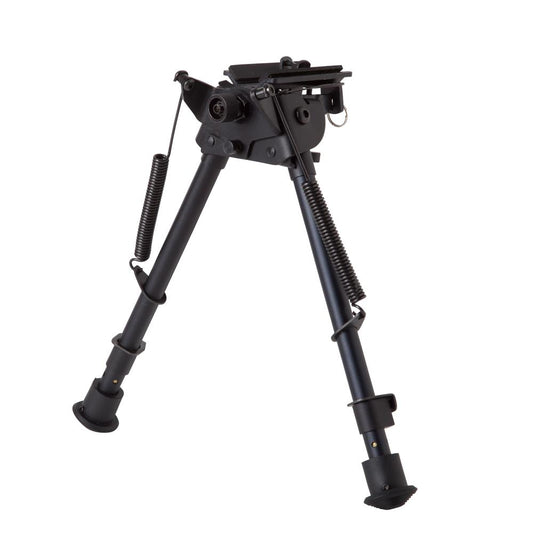

Firefield 9-14 Bipod delivers stability and support for precision shooting in various environments. Adjustable legs extend from 9 to 14 inches, allowing you to tailor the height to your shooting position, whether at the range or in the field. Made from durable aluminum, this bipod combines lightweight construction with robust strength, ensuring easy transport without compromising stability. A quick-release mechanism enables fast setup, so you can concentrate on your target. The rubberized feet enhance grip, providing steady aim even on uneven or slippery surfaces.
This bipod is suitable for both novice and experienced marksmen, improving shooting accuracy and efficiency. Its ability to adapt to different shooting styles and terrains makes it an essential accessory for anyone serious about long-range optics. Equip yourself with the Firefield 9-14 Bipod and elevate your shooting experience.
Key Features:
- ADJUSTABLE HEIGHT for versatile shooting angles, accommodating any terrain.
- LIGHTWEIGHT DESIGN ensures easy portability without sacrificing strength.
- QUICK-RELEASE MECHANISM allows for fast deployment in critical moments.
- STURDY CONSTRUCTION withstands heavy use and harsh weather conditions.
- RUBBERIZED FEET provide enhanced grip, ensuring stability on slippery surfaces.
- 360-DEGREE ROTATION facilitates movement and tracking of moving targets.
- CONVENIENT STORAGE features a compact foldable design for easy transport.
- UNIVERSAL MOUNTING compatible with most rifles, making it a versatile choice.
Technical Specifications Table
| Specification | Details |
|---|---|
| Height Range | 9-14 inches |
| Weight | 1.5 lbs |
| Material | Aluminum |
| Mount Type | Universal |
| Color | Black |
What’s in the Box?
- Firefield 9-14 Bipod
- Mounting hardware
- User manual
Customer Reviews
"This bipod is a game changer! Super sturdy and easy to use." - John D.
"Lightweight yet strong, perfect for my precision shooting needs." - Sarah T.
"Quick setup allowed me to focus on my shots instead of my gear." - Mike S.
FAQ
How does the Firefield 9-14 Bipod compare to other bipods? The Firefield bipod offers a great balance between weight and sturdiness, making it ideal for long-range shooting. Its quick-release feature sets it apart, allowing you to deploy it rapidly when every second counts.
Is the bipod compatible with all rifles? Yes, the Firefield 9-14 Bipod features a universal mounting system that fits most standard rifles. Whether you’re using a hunting rifle or a tactical setup, you can trust this bipod to provide a solid platform.
Similar Models
Looking for more options? Explore our range of Firefield accessories, including the Firefield 6-9 Tactical Bipod for a more compact solution or the Firefield 9-13 Adjustable Bipod for extended range. Browse our complete collection to find the perfect match for your shooting needs!
You May Also Like
Here’s some of our most similar products people are buying. Click to discover trending style.






